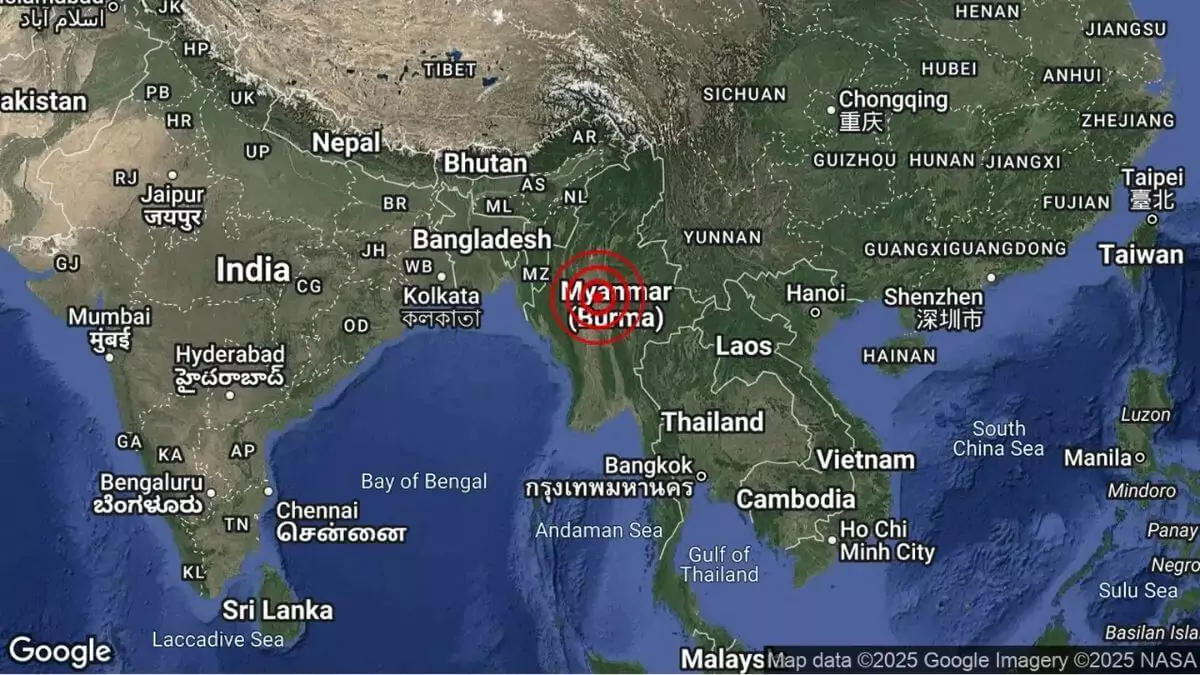March 28, 2025 – A 7.7 magnitude earthquake struck Thailand and Myanmar on Friday, March 28, 2025, killing at least two people and causing widespread damage, including the collapse of a high-rise building in Bangkok. The disaster has not only devastated local communities but also exposed critical gaps in global seismic safety, prompting calls for better preparedness worldwide.
The quake’s epicenter was located in northern Thailand, near the Myanmar border, but its effects reached as far as Bangkok, 600 kilometers away. In the Thai capital, a high-rise under construction collapsed, claiming two lives and injuring several others, as reported in initial assessments of the damage. Over 300,000 people evacuated from buildings across the city, with live coverage of the chaos capturing residents fleeing high-rise condominiums and hotels. In Myanmar’s capital, Naypyitaw, the tremor damaged ancient pagodas and homes, with visual evidence of the impact showing cracks in cultural landmarks. Rural areas near the epicenter, often built with fragile materials, are at risk of further destruction, and aid organizations are preparing for a potentially higher death toll as more reports come in.
Thailand’s tourism industry, which contributes 12% to its GDP according to a 2024 economic report, now faces a significant challenge. Bangkok, a popular destination for international travelers, must rebuild public confidence while addressing structural safety concerns. “The ground shook so violently—I thought the building would come down,” a Bangkok office worker shared in an interview. In Myanmar, the disaster compounds existing struggles, as the country continues to navigate political and economic turmoil. Rural communities, often living in poorly constructed homes, are particularly vulnerable, and the lack of modern infrastructure exacerbates the challenges they face in the aftermath.
The earthquake’s location near the Andaman-Sumatra subduction zone—a fault line responsible for the 2004 Indian Ocean earthquake and tsunami that killed over 230,000 people—has experts on edge. The U.S. Geological Survey (USGS) warns that this region is prone to large quakes, yet many buildings in Thailand and Myanmar do not meet modern seismic standards. The collapse in Bangkok has sparked calls for stricter building codes, especially in Thailand, where rapid urbanization has led to a surge in high-rise construction over the past decade. Experts argue that without significant improvements, such disasters could become more frequent and deadly as urban populations grow.
Globally, the disaster has prompted reflection on earthquake preparedness. In the United States, where states like California face similar risks, the event has renewed focus on seismic safety. FEMA reports that the U.S. invested $1.2 billion in 2024 for earthquake mitigation efforts, but experts argue that more funding is needed to protect vulnerable communities. The U.S. State Department has offered technical support to Thailand and Myanmar, emphasizing the importance of international disaster response. American disaster experts are also exploring how technology, such as AI-driven disaster prediction tools, could help mitigate future risks by providing early warnings and improving response strategies.
The international community has rallied to support the affected regions. The United Nations has committed to aiding rescue and recovery efforts, while countries like Japan and Australia, experienced in handling earthquakes, have offered assistance. For Thailand and Myanmar, the road to recovery will be long and challenging. Beyond the physical damage, the disaster has left a deep emotional toll, with families displaced and cultural landmarks at risk. The event underscores the need for global cooperation to address seismic risks, particularly in regions where rapid development outpaces safety measures.
As Thailand and Myanmar begin to rebuild, the world is reminded of the unpredictable power of nature and the importance of preparedness. Technology could play a key role in future disaster response—explore how smart home innovations or decentralized apps might contribute to safety efforts. Stay updated with Technocodex for more insights







